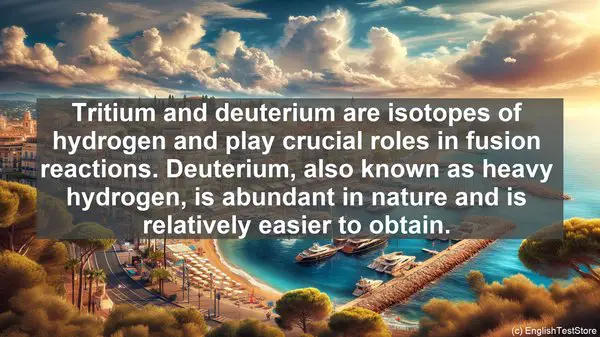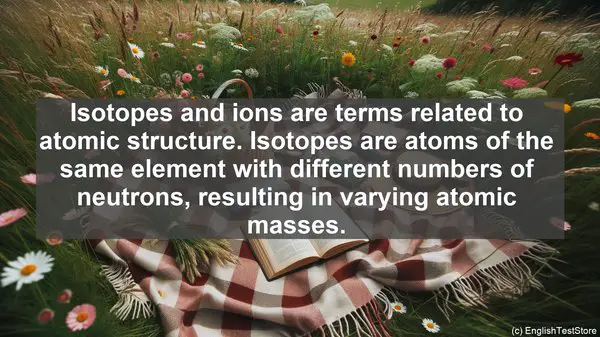Introduction: The Importance of Clear Communication in Fusion Technology
As you delve deeper into the fascinating world of fusion technology, you’ll encounter numerous terms that may seem similar but have distinct meanings. Accurate communication is crucial in this field, as a slight misunderstanding can have significant consequences. Today, we’ll discuss the top 10 commonly confused words in fusion technology, ensuring you have a solid grasp of their definitions. Let’s get started!
1. Plasma vs. Magma: Understanding the Differences
While both plasma and magma are states of matter, they differ in their composition and occurrence. Plasma, often referred to as the fourth state of matter, is a highly ionized gas consisting of charged particles. On the other hand, magma is a molten mixture of minerals and volatiles found beneath the Earth’s surface. Understanding this distinction is vital, as fusion reactors work with plasma, not magma.
2. Conduction vs. Convection: Heat Transfer Mechanisms
When it comes to heat transfer, conduction and convection are two primary mechanisms. Conduction involves the direct transfer of heat through a material, while convection occurs when heat is transferred through the movement of a fluid. In fusion technology, both mechanisms play crucial roles. For instance, conduction is vital in the design of heat-resistant materials, while convection is utilized in cooling systems.

3. Neutron vs. Neutrino: Understanding Subatomic Particles
Neutrons and neutrinos are often confused due to their similar names, but they have distinct properties. Neutrons are electrically neutral particles found in the atomic nucleus, while neutrinos are elementary particles with negligible mass and no electric charge. In fusion reactions, neutrons are released, and their control is essential for reactor safety.
4. Magnetic Field vs. Electric Field: Their Roles in Fusion
Magnetic and electric fields are fundamental in fusion technology. A magnetic field is created using magnets and is crucial for confining the plasma, preventing it from touching the reactor walls. In contrast, an electric field is used to heat and accelerate the plasma. Both fields work in harmony to achieve stable and controlled fusion reactions.
5. Isotope vs. Ion: Understanding Atomic Structure
Isotopes and ions are terms related to atomic structure. Isotopes are atoms of the same element with different numbers of neutrons, resulting in varying atomic masses. Ions, on the other hand, are atoms or molecules that have gained or lost electrons, leading to a net electric charge. In fusion, isotopes like deuterium and tritium are used, and ions are manipulated to control plasma behavior.
6. Bremsstrahlung vs. Synchrotron Radiation: Types of Emission
Bremsstrahlung and synchrotron radiation are two types of electromagnetic emissions encountered in fusion research. Bremsstrahlung, or braking radiation, occurs when a charged particle is decelerated, emitting photons. Synchrotron radiation, on the other hand, is emitted by charged particles moving in a curved path under the influence of a magnetic field. Both types of radiation provide valuable insights into plasma behavior.

7. Tokamak vs. Stellarator: Different Fusion Reactor Designs
Tokamaks and stellarators are two prominent designs for fusion reactors. A tokamak uses a toroidal magnetic field to confine the plasma, while a stellarator employs a complex arrangement of magnets. Each design has its advantages and challenges, and extensive research is being conducted on both to achieve the goal of sustainable fusion energy.
8. Tritium vs. Deuterium: Hydrogen Isotopes in Fusion
Tritium and deuterium are isotopes of hydrogen and play crucial roles in fusion reactions. Deuterium, also known as heavy hydrogen, is abundant in nature and is relatively easier to obtain. Tritium, on the other hand, is radioactive and is produced within the fusion reactor. The combination of deuterium and tritium is ideal for fusion, as it releases substantial energy.
9. Divertor vs. Blanket: Components of a Fusion Reactor
A divertor and a blanket are essential components of a fusion reactor. The divertor is responsible for extracting heat and impurities from the plasma, while the blanket surrounds the plasma, capturing the neutrons and converting their energy into heat. Both components are crucial for reactor efficiency and safety.
10. Fusion vs. Fission: Distinguishing Nuclear Processes
Finally, let’s clarify the difference between fusion and fission. Fusion is the process of combining light atomic nuclei to form a heavier nucleus, releasing a vast amount of energy. Fission, on the other hand, involves the splitting of a heavy nucleus into smaller fragments. While both processes release energy, fusion offers several advantages, including abundant fuel and reduced radioactive waste.
